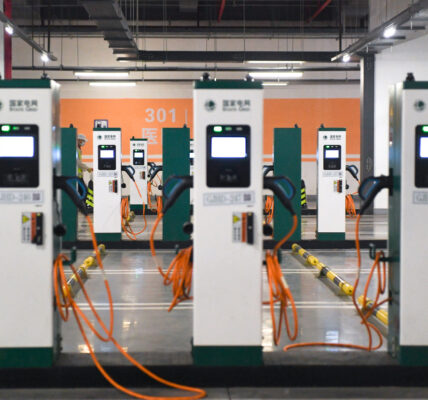More than 6 Lakh Electric 2, 3-wheelers Sold Under PM E-Drive Scheme Since April
More than 6 lakh electric two- and three-wheeler vehicles under the Centre’s flagship EV subsidy scheme PM E-Drive have been sold so far in the current financial year, data from the ministry of heavy industries released on Wednesday showed, as India targets 30% of new vehicle sales to be electric by 2030.
EV sales of 6,09,250 units, achieved till 28 October, are over 50% of the ministry of heavy industries’ cap for EV sales for FY25 under the subsidy scheme. Of the EVs sold, the heavy industries ministry has received claims for nearly 3.7 lakh vehicles and disbursed ₹320 crore for electric two- and three-wheelers.
PM E-Drive provides subsidy for electric two-wheelers and three-wheelers, along with electric buses, trucks, and ambulances. Electric four-wheelers were exempted from this scheme–a notable absence, since all previous EV subsidy schemes included electric cars.
The PM E-Drive scheme will be operational for two years till FY26, with subsidies for all vehicle classes being halved next year–following the global trend of tapering subsidies for EVs.
The Centre provided a corpus of ₹10,900 crore for the PM E-Drive scheme, of which ₹1,064 crore would be used for e-2W (two-wheelers) subsidies, and ₹511 crore would be used for subsidizing e-3W (three-wheelers) till the end of this fiscal year.
The heavy industries ministry data for the PM E-Drive scheme showed that of the government’s allotted ₹1,064 crore budget for e-2W for FY25, the ministry had received claims for ₹324 crore, and paid ₹185 crore out of these claims.
For e-3Ws, the government planned to cap subsidies at ₹511 crore. It has received claims worth ₹186 crore, and paid ₹134 crore out of these claims, the data showed.
The PM E-Drive scheme became operational on 1 October, but also subsumed the central government’s Electric Mobility Promotion Scheme (EMPS) which started on 1 April this year.
PM E-Drive is India’s third flagship scheme for EV subsidies. In 2015, the Centre had introduced the Faster Adoption and Manufacturing of Electric (and Hybrid) vehicles – FAME–scheme for five years. This scheme was extended by another five years till April 2024, under FAME-II.
In March this year, the Centre did not revive FAME for its third iteration. Instead, the government engaged the EMPS till it formulated a new scheme. The EMPS was scheduled to end in July, but was extended for two more months till September.
FAME, EMPS, and the PM E-Drive schemes form a crucial part of the demand-side incentives for consumers to purchase EVs. Under the PM E-Drive scheme, e-2Ws will have a subsidy of ₹10,000 per vehicle till the end of FY25, and ₹5,000 in FY26. Similarly, e-3W including e-rickshaws and e-carts would be granted a subsidy of ₹25,000 this fiscal, which will be halved in FY26.
However, the L5 category of e-3Ws will receive a subsidy of ₹50,000 per vehicle this fiscal, and be halved to ₹25,000 in FY26.
Along with a tax incentives–EVs attract a goods and services tax of 5%, compared to a 28% levy on internal combustion engine (ICE) vehicles–Indian consumers are incentivized to buy EVs, despite higher costs than ICE vehicles.
Under all these schemes, automakers have to sell EVs at subsidised prices to consumers, and claim reimbursement for these incentives from the government.
While 5.49 lakh new e-2W started running on Indian roads over the last seven months as per the heavy industries ministry data, the country’s EV adoption has been led by e-3Ws.
According to data released by the heavy industries ministry in August 2023, more than half of all three-wheelers in the country since 2018 were EVs, while a mere 5.28% of all two-wheelers, and 1.99% of all four-wheelers were EVs.







